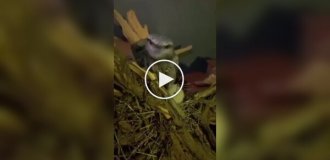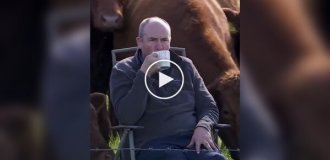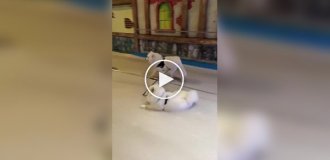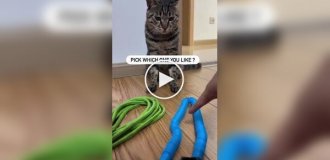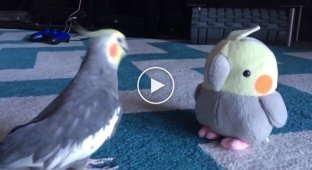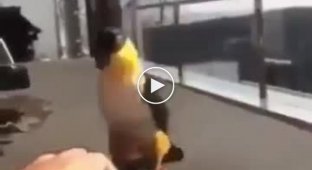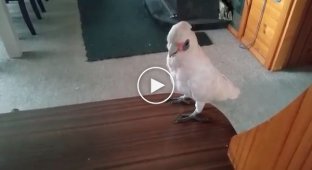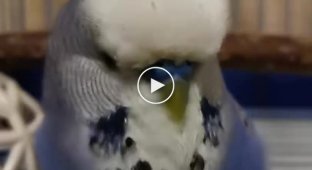Predatory parrot from the highway: why New Zealand farmers hate kea (4 photos + 1 video)
In New Zealand, farmers fear and hate one parrot. And tourists are not happy with this bird. At least, after they get to know her better. 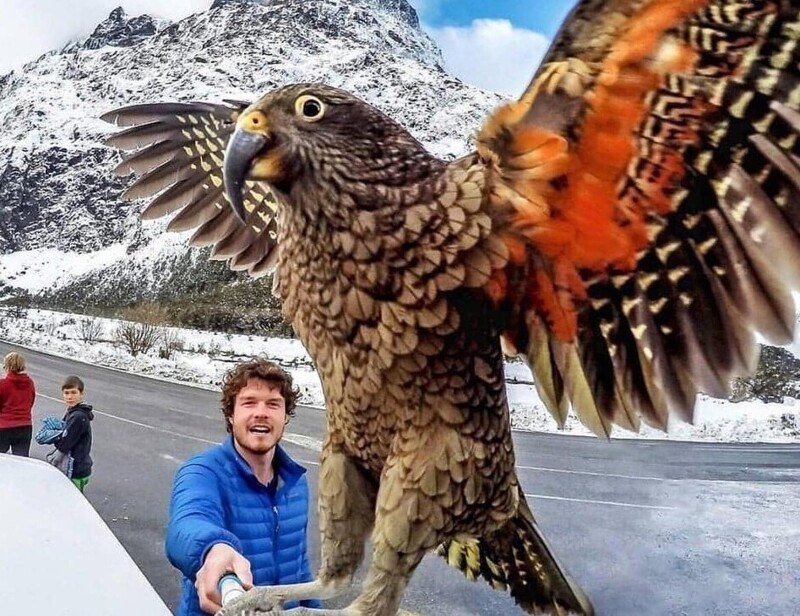
Local bandit
The kea parrot (Nestor notabilis) is found in New Zealand and nowhere else. It looks more like a bird of prey than a parrot. 
Kea is relatively small - about half a meter in body length and up to a kilogram in weight. But its beak is truly terrifying - strongly curved, long, strong and very sharp. The kea is generally a powerful bird, and also has excellent flight qualities. 
The bulk of the parrot's plumage has a modest greenish-brown tone. However, when the kea flies or simply spreads its wings, the dazzling red feathers located “under the armpits” of the parrot become noticeable.
The bird owes its name to its voice. The parrot screams almost like a karateka when hit.
Kea is also called a mountain parrot, since it really prefers high terrain, usually an area of beech forests on the border with alpine meadows. However, the parrot has long mastered living near human habitation, which does not give people any pleasure.
Unlike most of its parrot relatives, kea easily tolerates cold, even significant frosts. In New Zealand, these birds are regularly observed bathing in the snow.
Kea nests are made in deep crevices-burrows. The male supports the family while the female incubates a clutch of 2-4 eggs for three weeks, and then for more than two months until the offspring grows up. The papa kea stays with the brood and takes care of it longer than the mother. These parrots are known to have a very high chick survival rate.
In principle, kea are omnivores, but prefer animal food. Their usual diet is large insects, rodents, and worms. But after the whites conquered New Zealand, they also developed other “food products,” which earned them a bad reputation.
Sheep farming is widely developed in New Zealand. And farmers soon noticed kea devouring the corpses of fallen sheep. And then information appeared about the attack of these parrots on live cattle.
Allegedly, the kea sits on the sheep’s back, clings to the wool and begins to beat and tear the animal with its terrible beak. Sometimes you can come across a statement that he is trying to get to the layer of fat and eat it right from a living sheep. But more often they say that the parrot simply seeks to wound the sheep as much as possible so that it becomes weak and falls.
It is clear that sheep farmers, to put it mildly, do not like kea because of such predilections. However, in reality the situation is a little more complicated.
In defense of the robber
Ornithological scientists strongly disagree with farmers. They claim that all information about kea attacks on live sheep is unreliable, and the parrots only allow themselves to snack on carrion. And they are forced to do this because farmers, occupying territories for sheep pastures, deprived kea of their natural prey and usual habitats.
Scientists say kea is an endangered species. Since 1970, birds in New Zealand have been under strict protection.
However, even tourists in this country admit that kea are a dime a dozen - what an endangered species? And indeed, in fact, we should talk about a strong reduction in the number of birds before 1970 and the limitation of their distribution in general - this is endemic to New Zealand, and this should not be forgotten.
However, farmers stubbornly stand their ground: kea attack sheep and other domestic animals! Despite conservation measures, a certain number of birds are regularly shot - you can’t keep track of everything.
In addition, predation among domestic flocks is not the only complaint made against parrots. In New Zealand, kea are known as incorrigible hooligans, ruining anything and everything just for fun.
Woe from mind
Again, ornithologists argue that kea are extremely intelligent birds, capable of solving complex logical problems and adjusting their behavioral strategy in accordance with changes in the situation. But about a situation like theirs, they often say: this energy would be for peaceful purposes!
And kea are like raccoons. They use their intelligence and dexterity to get into places where no one invited them and ruin everything possible.
They open the latches and curtains. Turn over the trash cans and scatter them as widely as possible. Just for fun, they tear, make holes and gnaw car tires, seals and antennas, and damage wiring.
If in New Zealand, in the kea habitat, someone carelessly leaves a car with an open window, even for a short time, the Mamayev Massacre field may be found inside. Parrots climb into residential buildings and attics and cause destruction there worse than the tribes of vandals.
And careless tourists, whose attention was attracted by unusual birds, have paid for their carelessness more than once or twice. The Keas took small things from them (hats, glasses...), tore their backpacks and bags, snatched food or anything that seemed similar to it right out of their hands. And here’s what’s especially unpleasant: as soon as one kea notices something interesting or potentially tasty, out of nowhere, a whole flock of hooligans immediately appears!
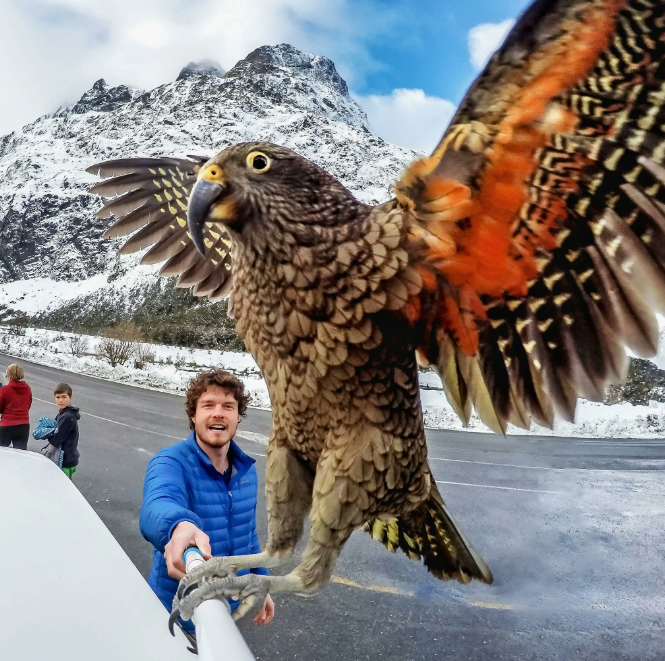
Oh what a beautiful selfie stick, now it's mine
On the roads of New Zealand there are signs everywhere: “Don’t feed the birds!” Yeah! It’s as if the kea are waiting for someone to purposefully feed them! They just come (well, that is, fly in) and take whatever they like - themselves. And it is by no means easy to disperse these large, strong, biting robbers.
Knowledgeable people recommend that tourists in New Zealand hold small items tightly in their hands if they are walking in the kea habitat. And, of course, never leave your car or things open unattended for a moment. Or you need to insure all this in advance and be sure to make sure that “damage by parrots” is listed among the insured events.
In general, in New Zealand for more than half a century there has been an unspoken war between conservationists and farmers over kea parrots. And in this matter there is no right and wrong. Of course, it is worth preserving the unusual species, which, among other things, is found only on the southern island. But the farmers are right about something: kea are definitely not harmless, and anything can be expected from them.




